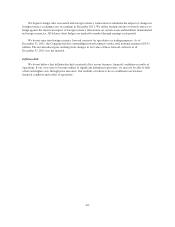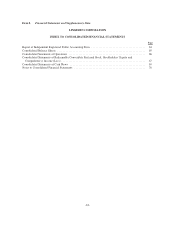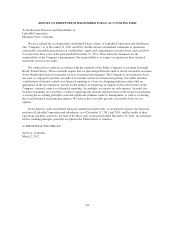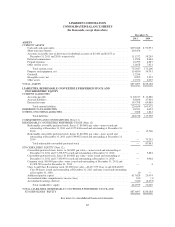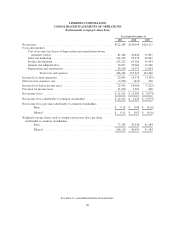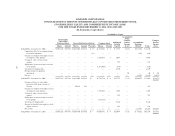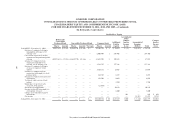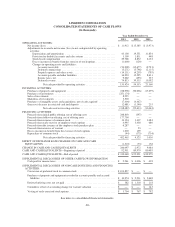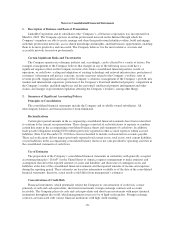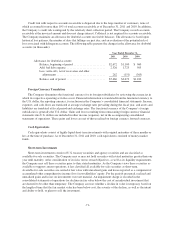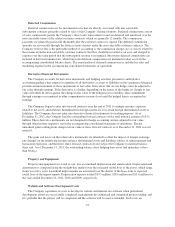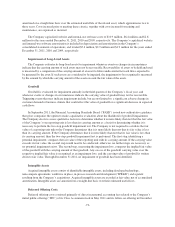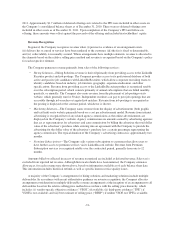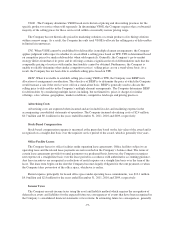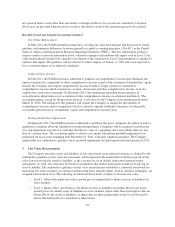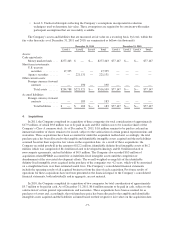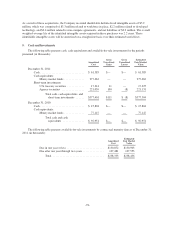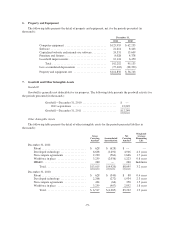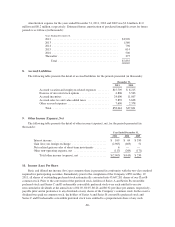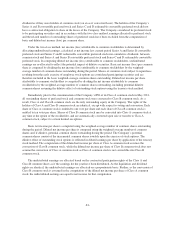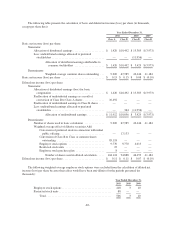LinkedIn 2011 Annual Report Download - page 76
Download and view the complete annual report
Please find page 76 of the 2011 LinkedIn annual report below. You can navigate through the pages in the report by either clicking on the pages listed below, or by using the keyword search tool below to find specific information within the annual report.Deferred Commissions
Deferred commissions are the incremental costs that are directly associated with non-cancelable
subscription contracts primarily related to sales of the Company’s hiring solutions. Deferred commissions consist
of sales commissions paid to the Company’s direct sales representatives and are deferred and amortized over the
non-cancelable terms of the related customer contracts, which are generally 12 months. The commission
payments are generally paid in full the month after the customer contract is signed. The deferred commission
amounts are recoverable through the future revenue streams under the non-cancelable customer contracts. The
Company believes this is the preferable method of accounting as the commission charges are so closely related to
the revenue from the non-cancelable customer contracts that they should be recorded as an asset and charged to
expense over the same period that the subscription revenue is recognized. Short-term deferred commissions are
included in deferred commissions, while long-term deferred commissions are included in other assets in the
accompanying consolidated balance sheets. The amortization of deferred commissions is included in sales and
marketing expense in the accompanying consolidated statements of operations.
Derivative Financial Instruments
The Company accounts for derivative instruments and hedging activities pursuant to authoritative
accounting guidance that requires recognition of all derivatives as assets or liabilities in the statement of financial
position and measurement of those instruments at fair value. Derivatives that are not hedges must be adjusted to
fair value through earnings. If the derivative is a hedge, depending on the nature of the hedge, its change in fair
value will either be offset against the change in fair value of the hedged asset or liability, firm commitment
through earnings or recognized in other comprehensive income (loss) until the hedged item is recognized in
earnings.
The Company began to enter into forward contracts near the end of 2011 to manage currency exposure
related to net assets and liabilities denominated in foreign currencies, for certain foreign denominated assets or
liabilities. The Company does not enter into derivative financial instruments for trading purposes. As of
December 31, 2011, the Company had five outstanding forward contracts with a total notional amount of $34.1
million. These derivative instruments are not designed for hedge accounting and are adjusted to fair value
through other income (expense), net in the accompanying consolidated statements of operations. The net
unrealized gain resulting from changes in fair value of these forward contracts as of December 31, 2011 was not
material.
The gains and losses on these derivative instruments are intended to offset the impact of foreign exchange
rate changes on the underlying foreign currency denominated assets and liabilities subject to remeasurement and
transaction exposures, and therefore, these forward contracts do not subject the Company to material balance
sheet risk. As of December 31, 2011, the outstanding balance sheet hedging derivatives had maturities of less
than 30 days.
Property and Equipment
Property and equipment are stated at cost, less accumulated depreciation and amortization. Depreciation and
amortization is computed using the straight-line method over the estimated useful lives of the assets, which range
from two to five years. Leasehold improvements are amortized over the shorter of the lease term or expected
useful lives of the improvements. Depreciation expense totaled $39.5 million, $18.6 million and $11.6 million for
the years ended December 31, 2011, 2010 and 2009, respectively.
Website and Software Development Costs
The Company capitalizes its costs to develop its website and internal-use software when preliminary
development efforts are successfully completed, management has authorized and committed project funding, and
it is probable that the project will be completed and the software will be used as intended. Such costs are
-72-


